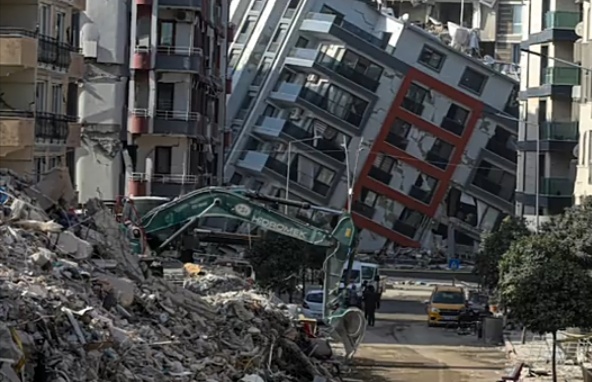The sequence of earthquakes, which were felt from the foothills of the Himalayas to the cities of Central Asia, highlighted how susceptible the area is to seismic activity.
Mandi, Himachal Pradesh, experienced an earthquake
The first earthquake struck the Mandi district of Himachal Pradesh at nine in the morning. With coordinates of 31.49°N, 76.94°E, the magnitude was measured at 3.4 and originated at a shallow depth of 5 km, according to the National Center for Seismology (NCS). Even though it was small in scope, it was felt strongly enough to drive people out of buildings. A quick jolt was followed by a low rumbling sound, according to locals. There have been no reports of property damage or injuries thus far.

Amid an ongoing crisis, Myanmar was struck by a new earthquake.
The U.S. Geological Survey (USGS) reports that a 5.5 magnitude earthquake occurred shortly after that, close to Meiktila in central Myanmar. Since the devastating 7.7 magnitude earthquake on March 28 that left over 3,600 people dead and thousands injured, this was one of the strongest aftershocks. Both Mandalay and Naypyitaw felt the tremor. Wundwin residents reported minor structural damage, including cracked ceilings, and said people fled from buildings. One Naypyitaw resident reported that he was not affected by the earthquake. Many residents refused to give their names out of concern for retaliation from the military regime. Although there were no reported casualties, the earthquake contributed to the nation’s already existing trauma.
Tajikistan’s twin earthquakes
Tajikistan was hit by an earthquake with a magnitude of 6.1 at 9:54 a.m. The strongest earthquake of the day, with an epicenter at 38.86°N, 70.61°E, was first recorded at 6.4 and struck at a depth of 10 km. Businesses and schools in the surrounding towns were evacuated as a precaution after residents experienced severe shaking. A second 3.9-mag earthquake that struck the same area at a depth of 10 km at 10:36 a.m. heightened worries about an increase in seismic activity.
Understanding Earthquake Measurements
Seismographs measure the energy emitted by earthquakes using either the more recent Moment Magnitude Scale (Mw) or the Richter scale. Although they rarely cause damage, earthquakes of magnitudes 3-4 are usually felt. While earthquakes over 6 can cause widespread destruction, those between 5 and 6 can harm badly constructed buildings. The depth of the earthquake is important because even moderately sized shallow earthquakes, like the ones that were reported on Sunday, are often felt more strongly at the surface


